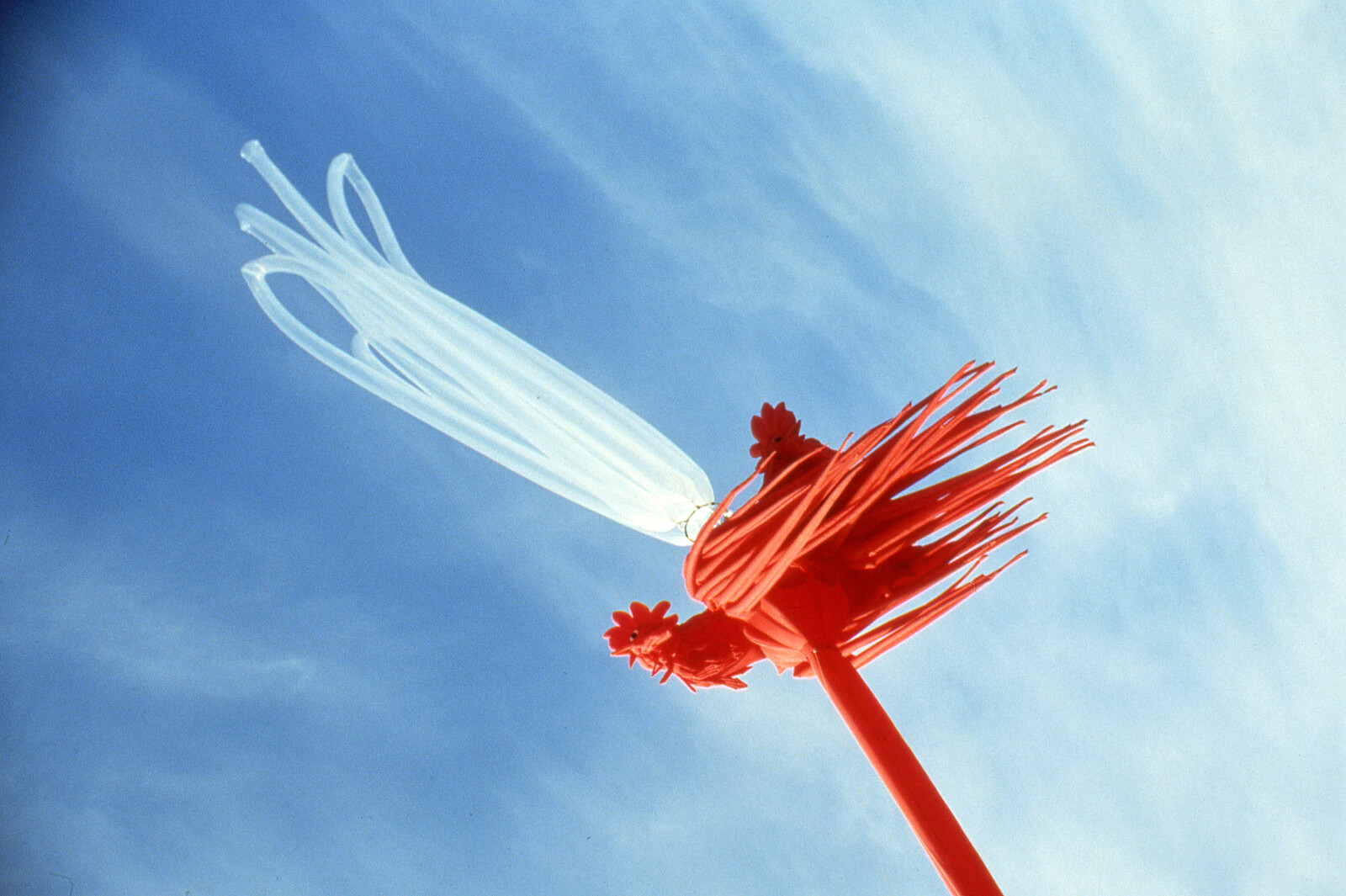Paths to Paradise
February 7–May 12, 2024
Paul Sacher-Anlage 1
4058 Basel
Switzerland
Hours: Tuesday–Sunday 11am–6pm,
Thursday 11am–9pm
tinguelybasel.infos@roche.com
Otto Piene (1928–2014) aimed high with his art: not only did he literally expand his artistic scope into the heavens with floating works of Sky Art and media projections, he also viewed his works as contributions to a more harmonious and sustainable world. The exhibition Otto Piene: Paths to Paradise is structured thematically to trace the artist’s visions through his most important projects and series. Works from different periods and in different media are in dialog with each other and, in particular, with his constant practice of drawing. Alongside his Raster Paintings, Smoke Drawings, Fire Drawings, and light sculptures, the exhibition includes more than twenty sketchbooks, allowing for new readings of the artist’s oeuvre. There is a special focus on early immersive installations such as Light Room with Mönchengladbach Wall (1963–2013) and Anemones: An Air Aquarium (1976/2023), as well as his innovative experiments with television and intermedia such as The Proliferation of the Sun (1967) and Black Gate Cologne (1968). This show at Museum Tinguely is the first major exhibition of Piene’s work in a decade; the last retrospective was organized during his lifetime in Berlin in 2014. The exhibition is on view in Basel from February 7 through May 12, 2024.
In 1961, Piene published his manifesto-like text “Paths to Paradise” in the publication ZERO 3. It begins with the words: “Yes, I dream of a better world. Should I dream of a worse?” This reflects his life-affirming, constructive approach and his unreserved belief in the potential of art to improve society. This monographic exhibition at Museum Tinguely foregrounds Piene’s wish to help shape a more harmonious, peaceful, and sustainable world.
Structured around recurring motifs and themes, the show reappraises Piene’s art by linking two periods in his oeuvre that have often been viewed as distinct: first Zero in Düsseldorf (1957–66) and then his time at MIT’s Center for Advanced Visual Studies (CAVS). This approach also reveals how Piene’s oeuvre developed from abstract art, striving for purity as part of the new start after World War II, into an art that used technology and media to address a broad public.
In addition to Piene’s well-known, major works, Paths to Paradise features rarely seen works and unpublished documents. It is also the first museum-scale show to focus attention on his constant practice of sketching and drawing in connection with his paintings, sculptures, installations, performances, and media art. The exhibition underscores the importance of drawing and designing in Piene’s oeuvre, both in the narrow sense, on paper, and in a broader sense, going beyond the usual boundaries of media—as when he used smoke and light, or even plastic inflatables, to draw shapes in the sky. Piene did sketch in a traditional manner, for instance in the sketchbooks he invariably had on hand, but he also experimented with technologies that were entirely new at the time, such as television broadcasts, slide projections, and even lasers. The notion of “design” here also stands for the potential Piene attributed to his art: to foster the development of society, to overcome the divide between art and technology, to counter ecological calamities, and above all to help create a more peaceful, united world. With his Sky Art, Piene also devised concrete political and symbolic projects like Olympic Rainbow (1972) and Black Stacks Helium Sculpture (1976), which both exemplify his community-based art deliberately aimed at a mass audience and positioned against an elitist isolation of the art world. The exhibition thus develops along two distinct but tightly interwoven strands, one media-oriented and the other content-oriented.
The thematically structured exhibition offers visitors a cross-section of Piene’s work from the second half of the twentieth century into the twenty-first. Displays combining sculptures, paintings, drawings, and archival material (photographs, videos, documents) present the artist’s key themes across different media and creative periods. In the spirit of Piene’s great interest in technology and new media, the exhibition offers an opportunity to experience his sketchbooks in digitized form. The presentation highlights the kinetic, animated quality of Piene’s sketchbooks that emerges when they are leafed through, doing justice in particular to his experiments with repetition and the effect of marker pigment bleeding through the paper.
Paths to Paradise also includes several rooms in which light projections or installations with inflatables invite visitors to experience Piene’s art physically, in three dimensions. The show’s sections unfold in a sequence of eleven spaces that vary in density and atmosphere, ranging from intriguing black boxes to airy, light-filled halls, as presentations in white cube spaces alternate with immersive optical, kinetic, and sculptural installations.
There is a particular focus on works from the late 1960s and early ’70s, made during Piene’s transition from Zero to Sky Art, when he was splitting his time between the United States and West Germany. These works include The Proliferation of the Sun (1967) and Fleurs du Mal (1969), as well as intermedia works such as Black Gate Cologne (1968), The Medium Is the Medium (1969), and Lichtspur im Haus der Sonne (1974). Underappreciated works and materials recently discovered in archives will be on view alongside works that have rarely been exhibited. The show will also breathe fresh life into a number of works that have not been seen since they were first made such as Anemones: An Air Aquarium (Creative Time, New York, 1976/2023) and Windsock Sculptures (MIT, 1969−70).
The curatorial approach emphasizes the ongoing relevance and impressiveness of Piene’s pioneering strategies of combining art and technology and of exploring art’s public, social, and environmental potential. Paths to Paradise asks what we can learn from Piene today. The exhibition invites visitors to rediscover his visionary art, beyond critiques of its naïve techno-enthusiasm and romantic idealism, as a tool for change and for expanding the limits of our imaginations.
Exhibition curated by Dr. Sandra Beate Reimann and Dr. Lauren Elizabeth Hanson.

